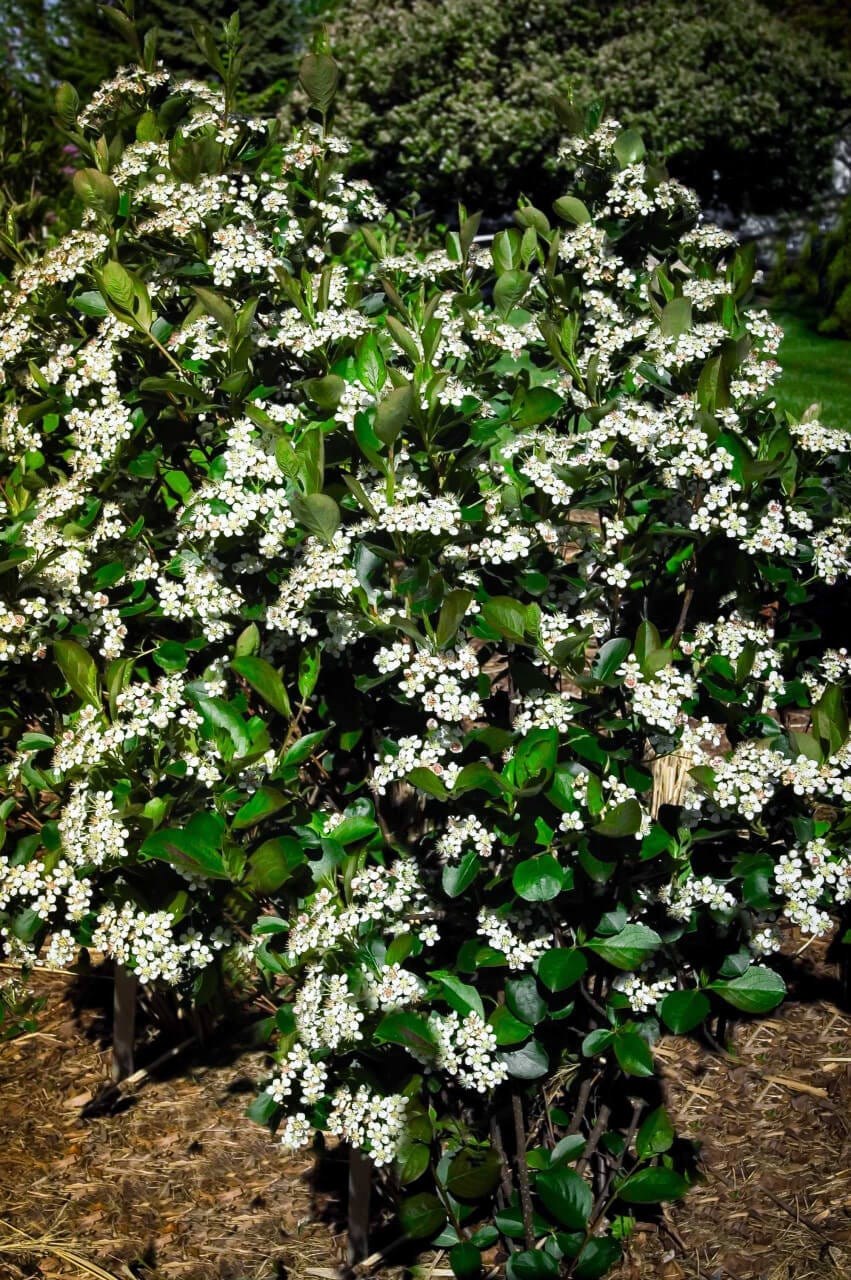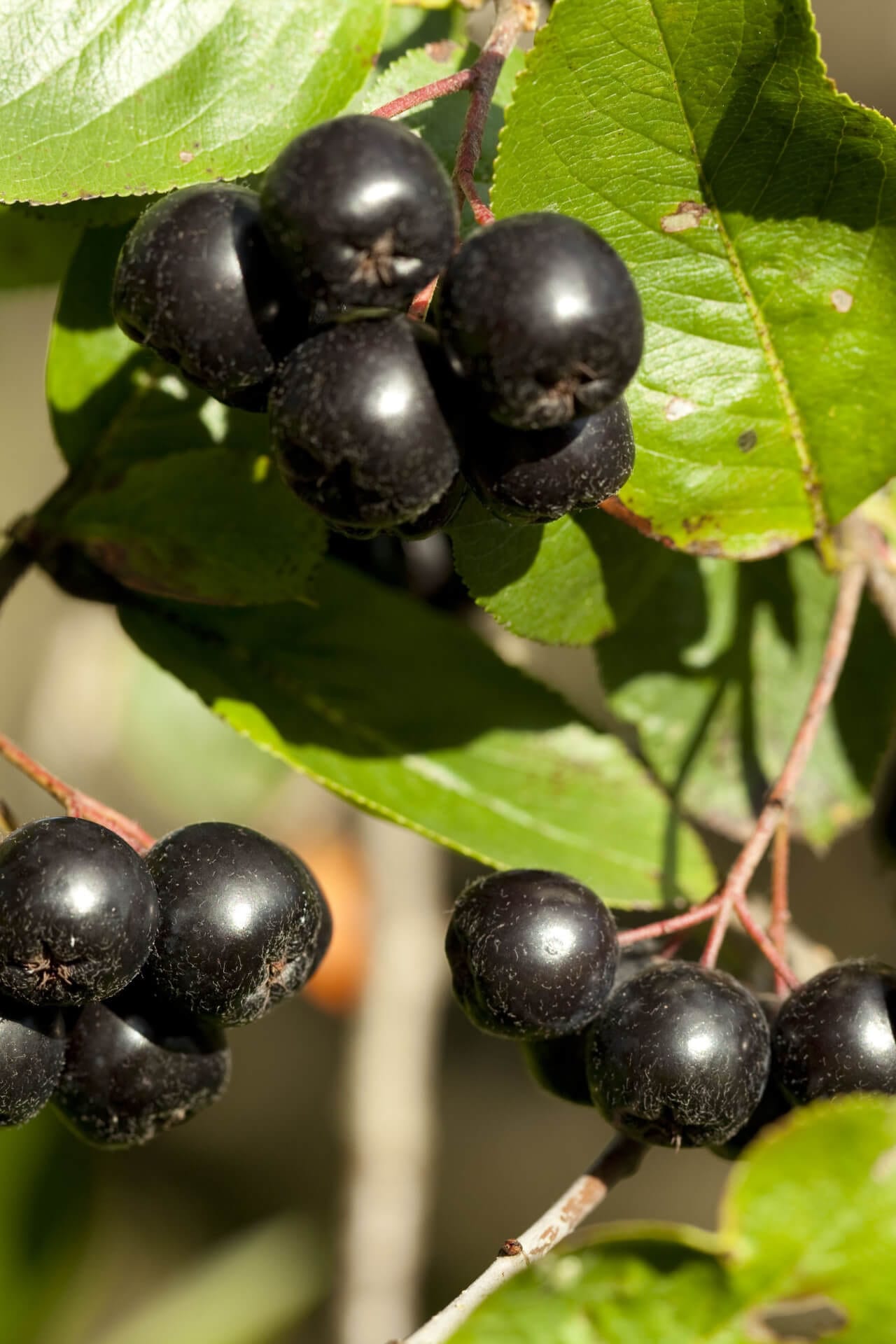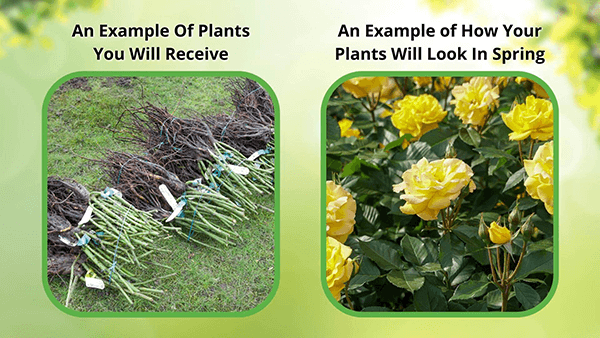Black Chokeberry
Black Chokeberry
| Order | Percentage Discount | ||
|---|---|---|---|
| 2-5 | 25% Off | ||
| 6-10 | 30% Off | ||
| 11-25 | 35% Off | ||
| 26-50 | 45% Off | ||
| 51+ | 65% Off | ||
Couldn't load pickup availability
5-7 Days
Under 10 Feet
Sun or Shade
3-8
Berry
Bare-root
HI.
Black Chokeberry - Aronia Melanocarpa
Black Chokeberry is a shrub native to eastern North America. It is also known as Aronia and belongs to the Rosaceae family. The plant can grow up to 3 meters tall and has green leaves that turn red in the Fall (End of October). The flowers are white or pink, and the fruit is a small, dark purple berry often used for making jams, jellies, and juices.
It is valued for its high antioxidants, vitamins, and minerals, especially anthocyanins. These pigments give the fruit its deep purple color and provide various health benefits, including reducing inflammation and improving cardiovascular health.
A Low-Maintenance Plant
The plant is relatively easy to grow and is used as a hedge in landscaping. It prefers well-drained, acidic soils and full sun to partial shade. It is also resistant to many common diseases, making it a low-maintenance addition to any garden or landscape. It is an excellent plant for landscaping and can grow in just about any kind of soil, including acidic, alkaline, and wet soils.
Where To Plant Black Chokeberry
It will grow well in areas with six hours of sunlight daily. It grows well in moist, well-drained soils. It can tolerate various soil types, including sandy, loamy, and clay. However, it prefers slightly acidic soils with a pH between 5.0 and 6.5.
Plant Requirements
Water must be regularly drained, especially during the first year after planting. However, once established, it can tolerate periods of drought. It is a hardy shrub that can grow in U.S.D.A. zones 3-8 and covers various temperatures across North America. The shrub is an excellent plant for landscaping. It can be planted as a border or hedge plant or used as a specimen plant in a mixed border. It can also be grown in wet areas near a pond or stream.
Benefits
The Shrub is a versatile North American native plant that can be used in many ways. It grows well in moist, acidic soils and produces edible fruit. The shrub also makes an attractive addition to the landscape and can be used for hedging or screening.
This plant is worth considering if you want to add something to your garden. This shrub grows from 3 to 6 feet tall and has dark green leaves that turn a beautiful red in the fall. The most notable feature of this shrub, however, is its fruit.
The shrub's fruit is edible, and many enjoy its tart flavor. One of the best things about the shrub is that it is relatively easy to care for. It is also resistant to most pests and diseases, so you won't have to worry about spending much time and money on maintenance.
Another great thing about the shrub is that it provides food for various animals. The fruit of this shrub is a favorite of many birds, and deer and other mammals often eat the leaves. Growing this plant is easy and adaptable to most growing conditions.
It is an excellent choice for those looking for a low-maintenance plant that offers beauty and utility. The shrub grows well in zones three through eight and is resistant to pests and diseases, making it ideal for landscaping projects in the northern United States.
If you are looking for a versatile, native shrub that produces edible fruit, the shrub is a good choice. The berries are highly antioxidants and make a delicious addition to your diet.
This is an impressive deciduous shrub with a delicate spread of spring white flowers and bundles of blueberry-like fruit. In autumn, it concludes with an abundance of blazing red foliage. It typically grows 3' to 6' tall and wide and has a mound shape. This shrub can tolerate many conditions and can be a unique addition to any lawn.
This Is How Your Plants Will Look upon Delivery
Bloom/Foliage Color
White
Shipping date depends on the date displayed and chosen when you order from the product's page.
We only accept returns on plants verified dead. If you think your plants have died, we offer a 1 year warranty, please use use this File a Claim Link to verify dead plants and start with return warranty process.



I love the texture this shrub provides! Great colors
Thank you for the 5 stars! We loved being of service to you and hope we can assist you again soon.
Very colorful arrangement! it will catch your eye!
Eli, we’re really grateful and appreciate you taking the time to share your rating with us. You made our day! We look forward to making your day again real soon.






